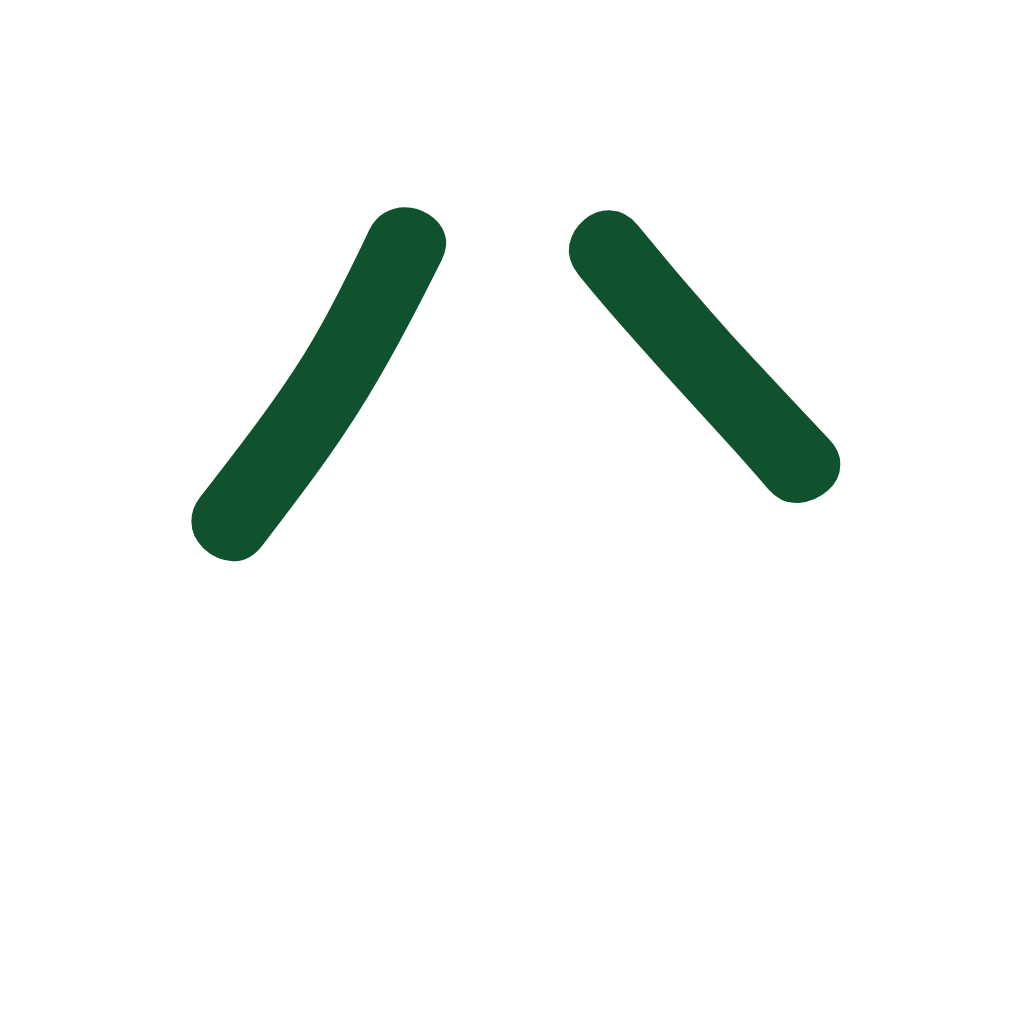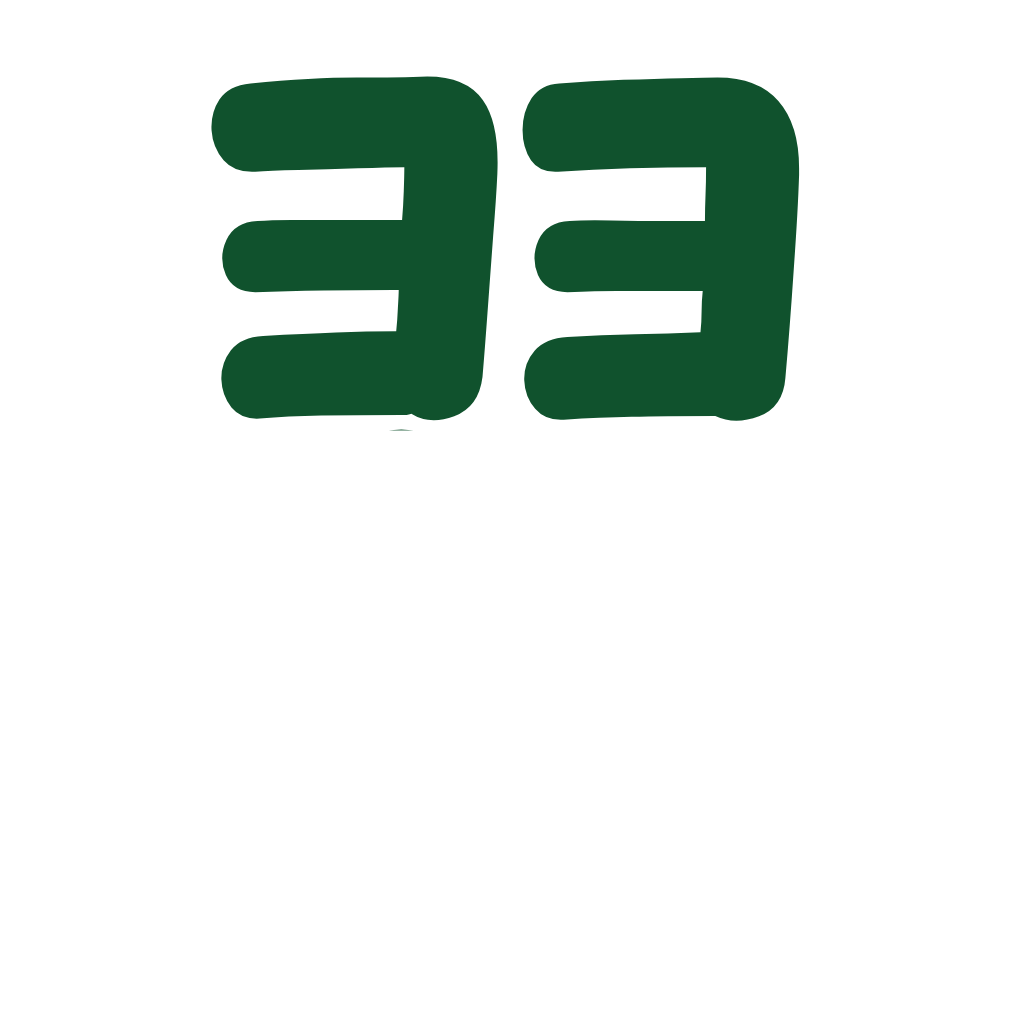Chapter 2 – Graphemes
What Are Graphemes?
Kanji are made up of smaller parts — visual pieces that repeat over and over in different combinations. In this course, we call these pieces graphemes. They are like the building blocks of kanji.
Learning to spot them gives you an edge — they help you break down unfamiliar kanji and make smart guesses about their meaning.
This page introduces the graphemes for Chapter 2 — each one appears in at least one kanji you'll learn this chapter.
 SPLIT
SPLIT
Mnemonic: Think of stage curtains pulling apart, just like you learned for 八 “eight.” Here, this shape often sits at the top of other kanji and signals the idea of something SPLITTING into parts.
Mnemonic: Learn this as a BIRD. The beak is on the left, the vertical stroke beneath it is the breast, and the clustered strokes on the right suggest plumage. You’ll see it in kanji tied to birds like “sparrow,” “hawk,” “eagle,” etc., and actions like “rouse up.”
Imagine the curved strokes as the bent wooden body of a BOW. You can picture a bowstring stretching taut along the left side. Together, it's ready to fire an arrow. You’ll notice it in kanji related to pulling or tension.
This is the ROOF of a house. See a chimney in the middle and eaves on the left and right.
 WINGS
WINGS
Mnemonic: See the two WINGS of a bird. The wings are being tucked in tightly.
How are graphemes different from radicals? (optional read)
You’ve probably heard the word radical before. Radicals are a specific system used in dictionaries to index kanji, and every kanji has exactly one of them.
But when learning kanji, focusing only on radicals can be limiting — many important recurring parts aren’t radicals at all.
Graphemes are different: they include all reusable visual pieces that contribute to a kanji’s meaning or shape, regardless of whether they’re officially considered radicals.
Why we say “graphemes” here (optional read)
In linguistics and writing-system studies, grapheme means the smallest meaningful written symbol in a script, like a phoneme in sound. In this course, we adapt that idea for kanji study. Grapheme isn’t the standard term in Japanese pedagogy — you’ll usually see words like “components” or “elements.” We’ve chosen it because many textbooks casually use “components” to mean radicals, which leads to overlap and confusion. By defining radicals as the dictionary indexing piece (one per kanji) and graphemes as any recurring visual piece, we aim to keep the distinction clear and make kanji structure easier to grasp.